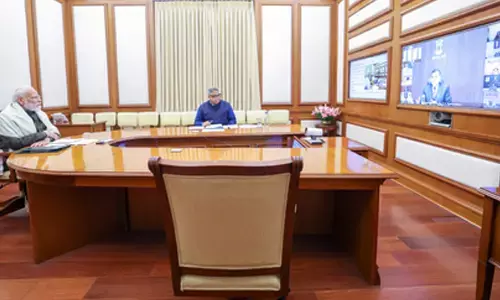The impact of rupee's depreciation on aspirations to study abroad

As the rupee tumbles to a new record low against the US dollar, it ripples concerns far and wide across the Indian economy.
As the rupee tumbles to a new record low against the US dollar, it ripples concerns far and wide across the Indian economy. The weakening of the Indian currency against the US dollar will deeply impact students' overseas education plans, adding to the financial burden on their families. Tuition fees and living expenses constitute the two main components of students' expenses when studying abroad. The rupee facing a losing streak translates to increased fees and cost of living as a dollar would cost more in terms of rupee than earlier.
Historical data comparison can capture the significant increase in burden propelled by the rupee's dropping value. An Indian student, who paid a fee at an exchange rate of around 65 rupees per dollar in 2017, might end up paying 77 rupees per dollar in 2022.
Additionally, many students pursuing education abroad avail of loans to fund their studies. The loans are procured in domestic currency (INR) while the spending happens in a foreign currency. When the rupee falls in value, the rupee amount required to pay in dollars increases.
As a result, the devaluation of the rupee increases the finance obligations. This tantamounts to increased cost of education and living expenses and diminishes the value of the corpus set aside for overseas education by aspirants and their family members as loans are taken factoring in the initial requirements.
Indeed, for those who have not factored in the rate of domestic currency fluctuation against the destination country's currency, the depreciation of INR against the US dollar can significantly impact the financial burden of studying abroad. There can be some solutions, like few banks in the country have introduced some top-up schemes that attempt to bridge the gap created by exchange rate fluctuations. While the top-up loans and refinance schemes are a good source. However, the repayment terms of such loans are not affordable by all; moreover, to procure this loan, one might need to pledge collateral.
For Indian students already studying abroad, the current depreciation of INR against the US dollar only leaves room for this crisis management. However, for those planning overseas education this year and beyond, the status quo of economic factors should help define a corpus that factors in not just tuition fees, travel expenses, and cost of living but calculates beyond the conventional determiners and factors in exchange rate fluctuations that could entail a revision of investment plans.
Careful consideration of economic factors and meticulous planning can help students hedge this fall. Scholarships are a boon for aspiring students. Several scholarships are available for students belonging to varied backgrounds offered by institutions, government-based scholarships, private organizations, and trusts. Choose suitable bank loans.
Exchange rate changes should not influence your decision to study abroad. All that is required is that all economic considerations be taken into account, as finance is the most significant hurdle to studying abroad. To tide over uncertainty, plan ahead and evaluate your alternatives.
(The author is the Founder & CEO, iSchoolConnect)















